Cardiac Cycle Nursing school survival, Cardiac cycle, Medical school

Cardiac Cycle Notes PDF Heart Valve Ventricle (Heart)
cps.med.ubc.ca

Anatomy and Physiology Cardiac Cycle Notes Steps of the Etsy UK
"Cardiac cycle refers to the sequence of events that take place when the heart beats." What is Cardiac Cycle? The cardiac cycle attributes to a comprehensive heartbeat from its production to the commencement of the next beat. It comprises diastole, the systole, and the intervening pause.
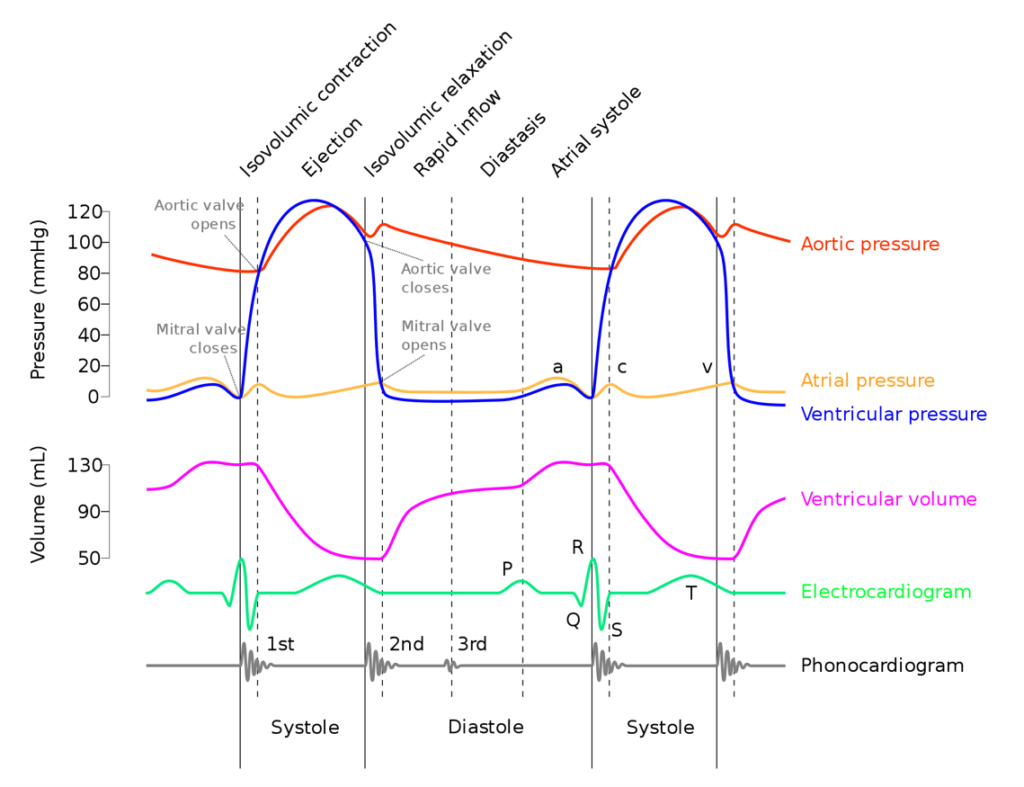
The Cardiac Cycle ALevel Biology Revision Notes
in a specialised area of cardiac cells, the sinoatrial node (SAN), situated in the right atrium. This is the heart's natural pace-maker. When working properly, it sets the heart rhythm (sinus rhythm) and initiates impulses that act on the myocardium, stim - ulating cardiac contraction. The cardiac impulse passes from the SAN into the atria,

Cardiac Cycle Phases, Anatomy & Physiology
Cardiovascular Anatomy and Physiology Notes Contents Cardiovascular system anatomy and physiology Normal heart sounds Abnormal heart sounds Lymphatic system anatomy and physiology Osmosis High-Yield Notes This Osmosis High-Yield Note provides an overview of Cardiovascular Anatomy and Physiology essentials.

Heart Sounds Origin, Timing and Murmurs Medical Library
11 Mechanical Events of the Cardiac Cycle • The cardiac cycle is divided into systole (ventricular contraction) and diastole (ventricular relaxation). o At the onset of systole, ventricular pressure rapidly exceeds atrial pressure, and the AV valves close. The aortic and pulmonary valves are not yet open, however, and so no ejection

Bernal Studio The Art of Daniel Bernal Phases of the Cardiac Cycle
The Cardiac Cycle consists of Diastole and Systole During diastole → heart relaxes and fills with blood During systole → the heart contracts and eject blood (i.e. emptying) Note: If heart rate is 72 beats/min, the duration of the cardiac cycle is about 0.8 second per beat. Of which 0.3 second is for systole and 0.5 second is for diastole.

Cardiac Cycle Nursing school survival, Cardiac cycle, Medical school
Cardiac Cycle. The cardiac cycle comprises a complete relaxation and contraction of both the atria and ventricles, and lasts approximately 0.8 seconds. Beginning with all chambers in diastole (relaxation), blood flows passively from the veins into the atria and past the atrioventricular valves into the ventricles. The atria begin to contract.
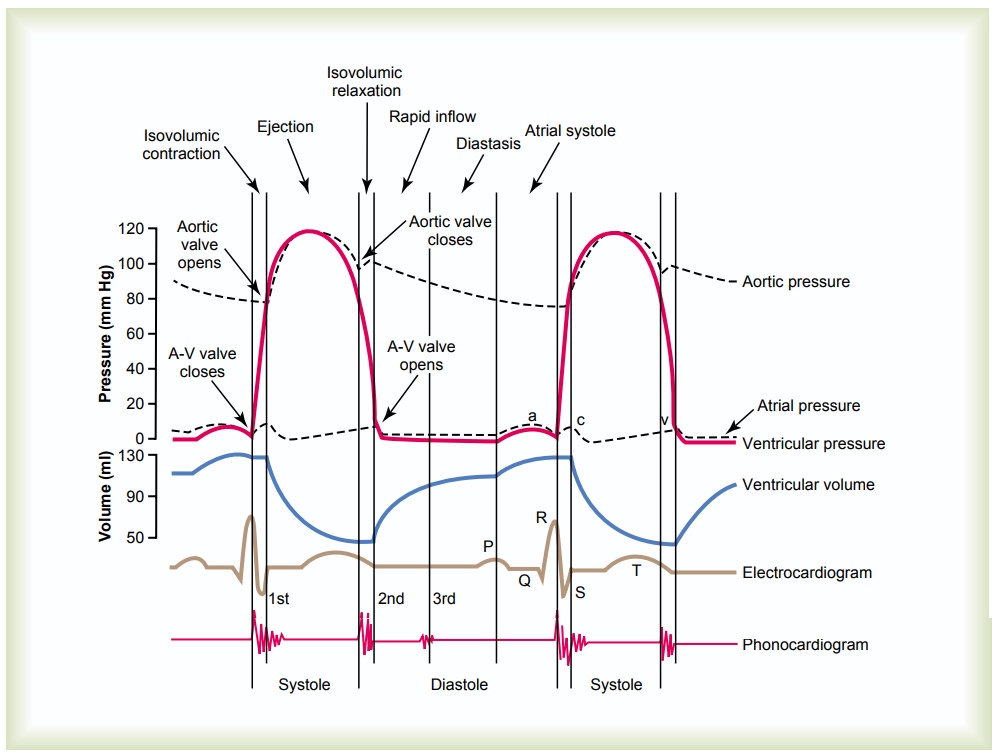
The Cardiac Cycle
Human Anatomy & Physiology: Cardiovascular Physiology Ziser 2404 Lecture Notes, 2005 3 idea of how rapidly the impulses are being conducted and how the heart is functioning Cardiac Cycle 1 complete heartbeat (takes ~ 0.8 seconds) consists of: systole contraction of each chamber diastole relaxation of each chamber two atria contract simultaneously

Cardiac Cycle Notes and study documents for different areas of study
January 2019 Women's Health Authors: Vanessa N Barros Figures Discover the world's research. The ECG signal consists of three waves start with the electrical P-wave generates from the upper.
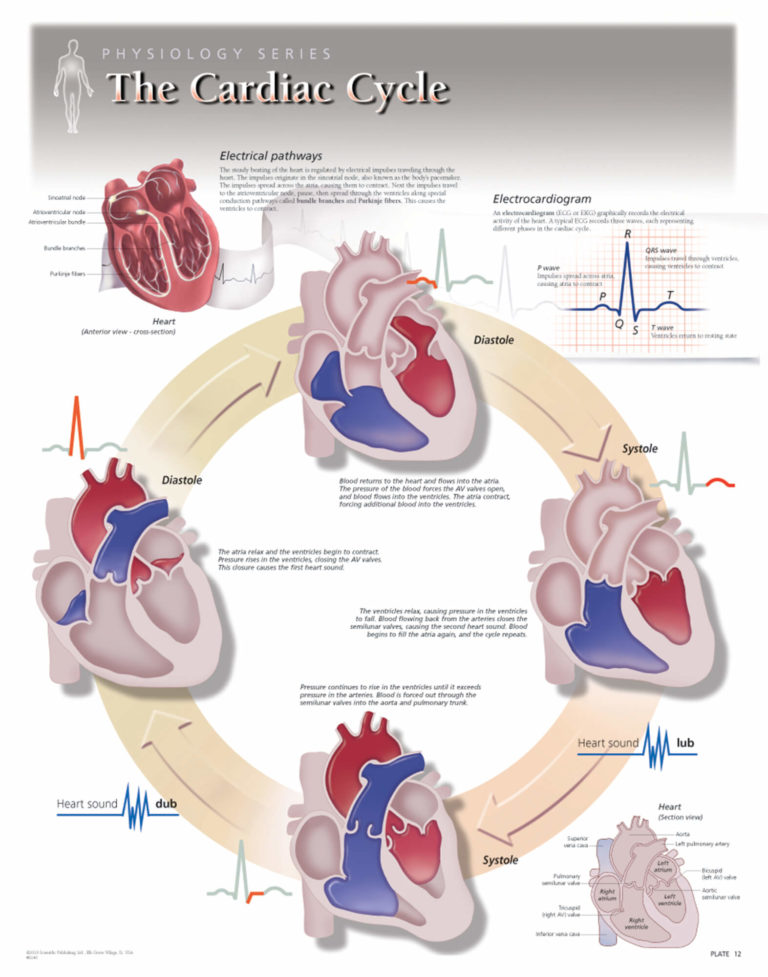
The Cardiac Cycle Scientific Publishing
Cardiac Cycle Notes: Diagrams & Illustrations | Osmosis Exit full screen Full screen Cardiac Cycle Notes Contents Measuring cardiac output (Fick principle) Cardiac and vascular function curves Stroke volume, ejection fraction, and cardiac output Altering cardiac and vascular function curves Pressure-volume loops Changes in pressure-volume loops

Body Fluids and Circulation Important Notes for NEET Biology
CARDIAC CYCLE The cardiac cycle is a period from the beginning of one heart beat to the beginning of the next one. It consists of two parts: Ventricular contraction called Ventricular relaxation called systole. diastole. Each part of the cardiac cycle consists of several phases characterized by either

Biology Lessons, Biology Notes, Science Notes, Medicine Notes, Medicine
Explain the events of the cardiac cycle. Define cardiac output and stroke volume. Distinguish among the types of blood vessels, their structures, and their functions. Identify the major arteries and veins of the pulmonary circuit as well as the areas they serve. Describe the hepatic portal system. KEY TERMS
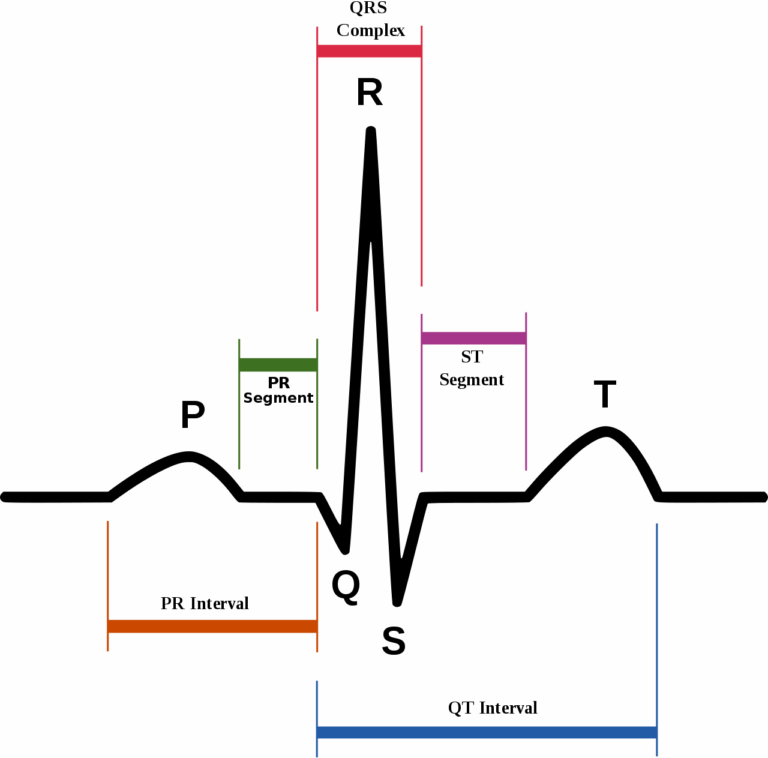
The Cardiac Cycle ALevel Biology Revision Notes
Figure 19.3.1 - Overview of the Cardiac Cycle: The cardiac cycle begins with atrial systole and progresses to ventricular systole, atrial diastole, and ventricular diastole, when the cycle begins again. Correlations to the ECG are highlighted. Pressures and Flow
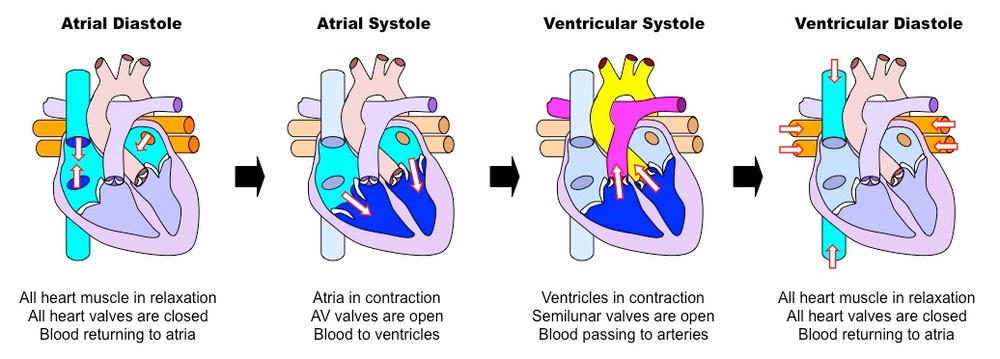
Phases Of Cardiac Cycle sharedoc
Wigger's diagram is used to demonstrate the varying pressures in the atrium, ventricle, and artery during one cardiac cycle (Figure 2). Intracardiac pressures are different within the right and left sides of the heart. The left side has higher pressure, as it has to pump blood through the whole body, compared to the right side, which has to.
Cardiac Cycle Physiology & Major Events PDF Download
The cardiac cycle is defined as a sequence of alternating contraction and relaxation of the atria and ventricles in order to pump blood throughout the body. It starts at the beginning of one heartbeat and ends at the beginning of another. The process begins as early as the 4th gestational week when the heart first begins contracting.

SOLUTION Cardiac cycle notes dr najeeb lectures detailed with
Cardiovascular and lymphatic systems make up the circulatory system a vast network of organs and vessels responsible for the flow of: The Lymphatic system Lymph Lymph nodes Lymph vessels Blood Nutrients Hormones Oxygen and other gases To and from the Cells of the body The Cardiovascular system Blood Blood vessels Heart